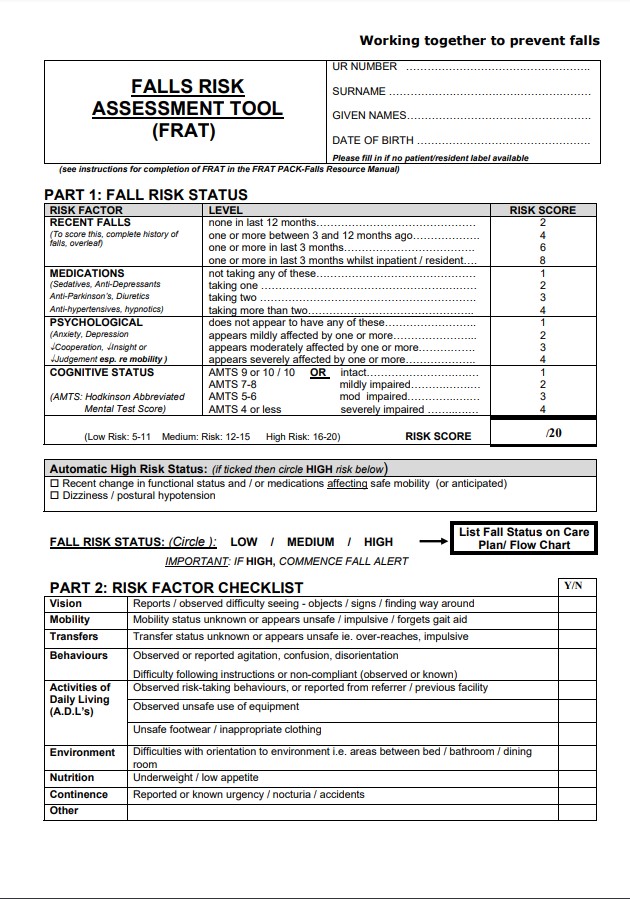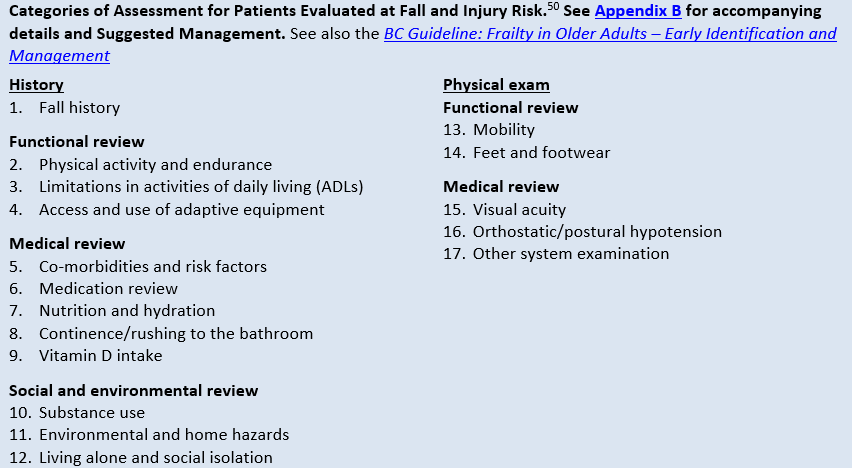Top Guidelines Of Dementia Fall Risk
Table of ContentsSome Known Incorrect Statements About Dementia Fall Risk Dementia Fall Risk Fundamentals ExplainedThe Single Strategy To Use For Dementia Fall RiskThe 20-Second Trick For Dementia Fall Risk10 Simple Techniques For Dementia Fall Risk
Analyzing fall risk helps the entire healthcare group develop a much safer atmosphere for every individual. Make sure that there is a marked area in your medical charting system where staff can document/reference scores and record pertinent notes associated with fall avoidance. The Johns Hopkins Loss Danger Assessment Tool is one of many tools your personnel can use to assist stop negative clinical occasions.Client falls in hospitals prevail and incapacitating negative events that persist regardless of decades of initiative to lessen them. Improving communication throughout the analyzing nurse, treatment group, client, and patient's most involved family and friends might strengthen loss prevention efforts. A team at Brigham and Women's Health center in Boston, Massachusetts, looked for to establish a standardized loss avoidance program that centered around improved interaction and client and household interaction.

The technology group highlighted that successful application relies on individual and personnel buy-in, assimilation of the program into existing workflows, and integrity to program procedures. The group noted that they are grappling with exactly how to guarantee continuity in program implementation throughout durations of dilemma. Throughout the COVID-19 pandemic, for instance, a boost in inpatient falls was linked with constraints in person interaction together with constraints on visitation.
8 Easy Facts About Dementia Fall Risk Described
These incidents are generally considered preventable. To carry out the intervention, companies need the following: Access to Loss ideas sources Loss ideas training and retraining for nursing and non-nursing personnel, including new registered nurses Nursing process that permit patient and family members engagement to conduct the drops evaluation, ensure use the prevention plan, and perform patient-level audits.
The results can be extremely detrimental, often speeding up patient decline and triggering longer hospital keeps. One study approximated keeps increased an extra 12 in-patient days after a person loss. The Loss TIPS Program is based upon appealing people and their family/loved ones across three main procedures: evaluation, individualized preventative interventions, and bookkeeping to guarantee that people are engaged in the three-step loss avoidance process.
The person assessment is based on the Morse Loss Range, which is a validated fall risk evaluation device for in-patient health center settings. The range consists of the six most common reasons clients in hospitals fall: the individual loss history, risky conditions (consisting of polypharmacy), use of IVs and various other exterior devices, psychological condition, stride, and movement.
Each danger element relate to one or even more workable evidence-based treatments. The registered nurse develops a strategy that includes the treatments and is noticeable to the treatment group, client, and family on a laminated poster or printed visual aid. Nurses establish the strategy while consulting with the person and the person's family members.
Not known Details About Dementia Fall Risk
The poster serves as a communication device with various other members of the person's treatment team. Dementia Fall Risk. The audit component of the program consists of evaluating the person's understanding of their threat variables and avoidance strategy at the device and hospital degrees. Nurse champions perform at the very least 5 individual meetings a month with clients and their families to check for understanding of the loss prevention strategy

A projected 30% of these falls cause injuries, which can vary in extent. Unlike various other unfavorable occasions that call for a standard professional response, loss prevention depends extremely on the requirements of the patient. Consisting of the input of people who recognize the patient ideal permits higher customization. This technique has confirmed to be a lot more efficient than fall avoidance programs that are based mainly on the production of a threat rating and/or are not customizable.
Some Known Questions About Dementia Fall Risk.

Based upon auditing outcomes, one site had 86% compliance and two sites had more than 95% conformity. A cost-benefit analysis of the Loss TIPS program in eight hospitals approximated that the program expense $0.88 per person to execute and resulted Full Report in savings of $8,500 per 1000 patient-days in straight costs connected to the prevention of 567 falls over 3 years and 8 months.
According to the development group, organizations curious about carrying out the program needs to carry out a preparedness evaluation and drops prevention voids analysis. 8 Furthermore, companies should make certain the essential facilities and operations for implementation and create an application strategy. If one exists, the organization's Fall Avoidance Task Pressure need to be associated with preparation.
Not known Facts About Dementia Fall Risk
To begin, companies need to guarantee completion of training components by registered nurses and nursing read aides - Dementia Fall Risk. Medical facility personnel must analyze, based upon the needs of a health center, whether to use a digital health and wellness document hard copy or paper variation of the loss prevention strategy. Applying groups need to recruit and train nurse champions and establish processes for auditing and reporting on fall information
Personnel require to be associated with the procedure of revamping the process to involve individuals and family in the evaluation and avoidance strategy process. Solution must remain in area to make sure that units can recognize why a fall happened and remediate the cause. Much more specifically, nurses should have networks to supply continuous comments to both staff and system leadership so they can change and improve fall avoidance operations and connect systemic troubles.